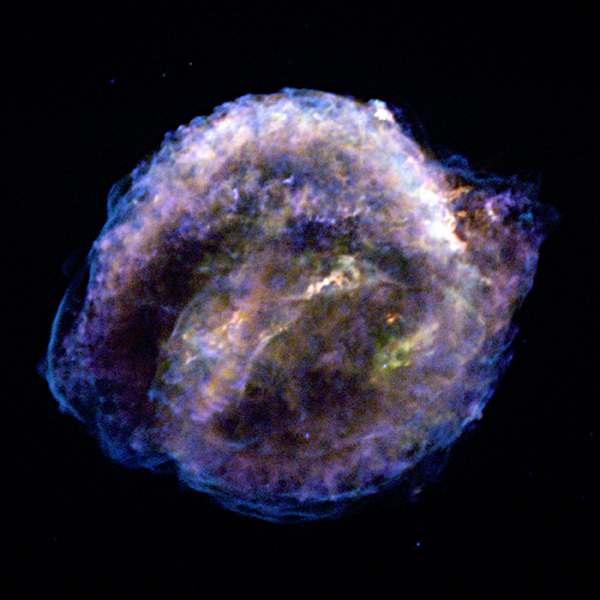Chandra data suggests Kepler's Supernova was actually a type Ia supernova

Type Ib, Ic and II supernovae occur during the gravitational collapse of a massive star, the core forms a neutron star or in some cases black hole and the associated energy release blows off the outer layers.
In contrast type Ia comes from older binary stars, when a white dwarf acquires additional mass and exceeds the critical Chandrasekhar mass limit and blows up completely in a nuclear detonation.
More like this
A couple of years ago, a group of California theorists came up with a whacky theory for a new kind of thermonuclear supernova.
“When a star goes supernova, the explosion emits enough light to overshadow an entire solar system, even a galaxy. Such explosions can set off the creation of new stars. In its own way, it was not unlike being born.” -Todd Nelson
There aren't many reports of 14 year-olds making scientific contributions. Even in the field of astronomy, Caroline Moore, the youngest person to discover a supernova, is a bit unusual.
Hosted by Museum of Natural Sciences:
Supernova: The Violent Death of a Star
